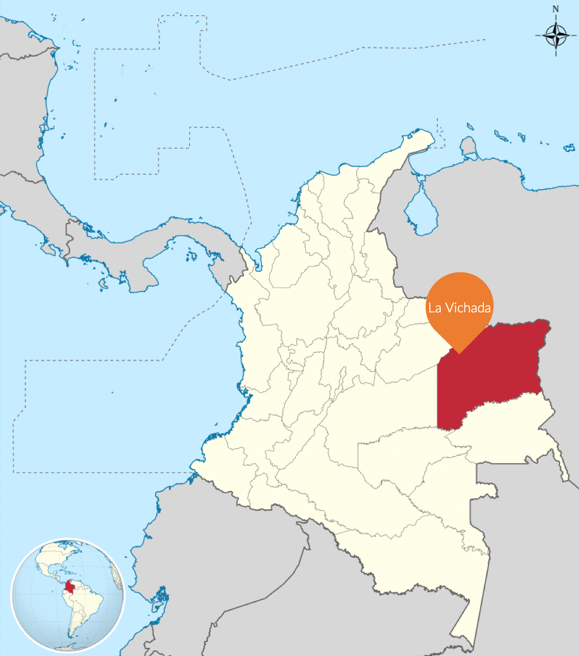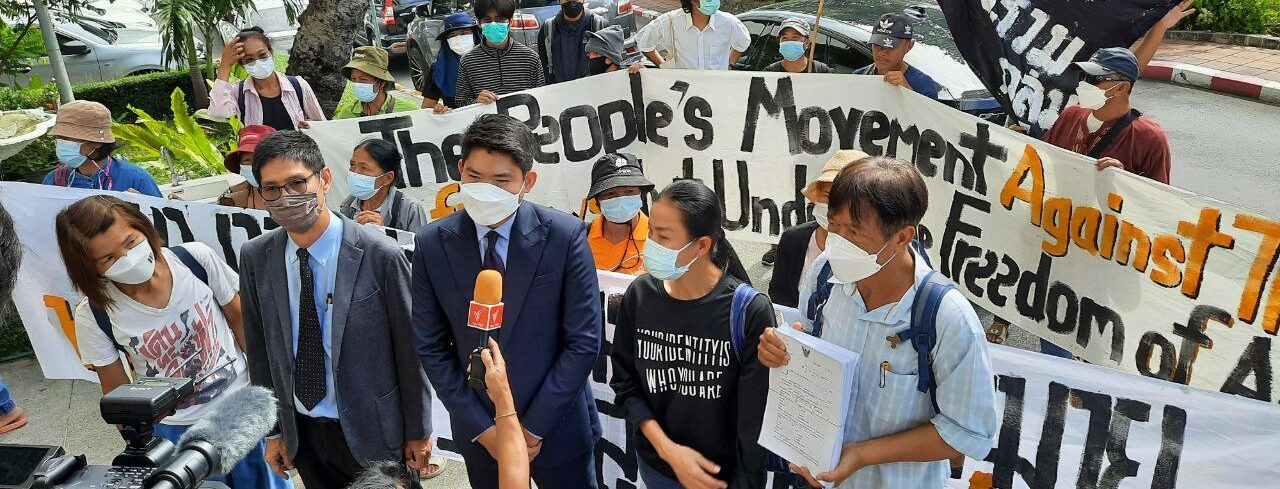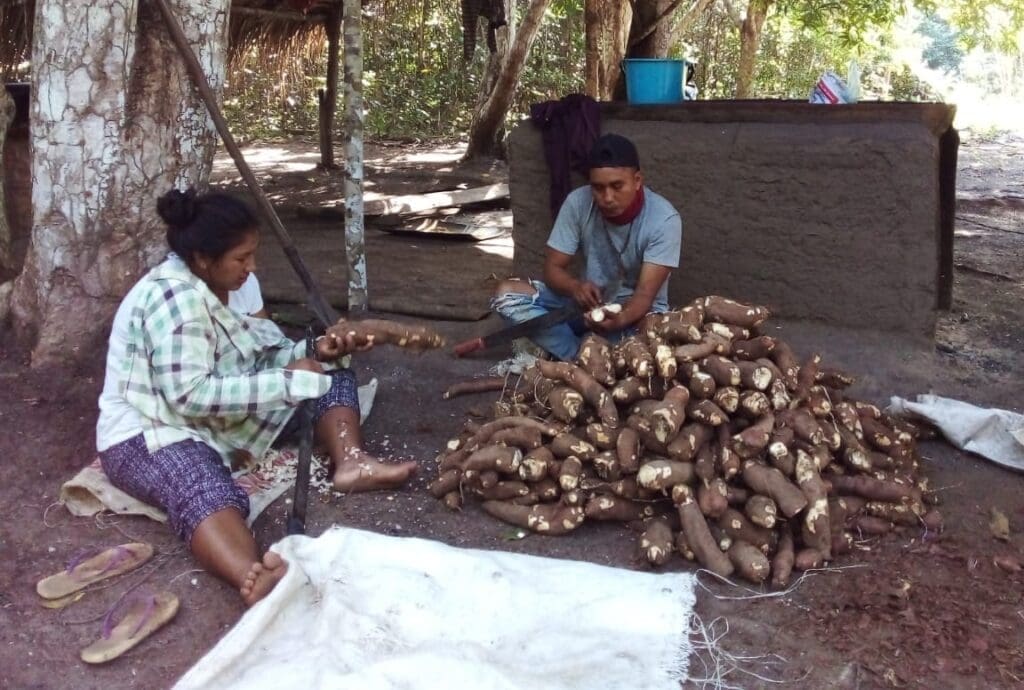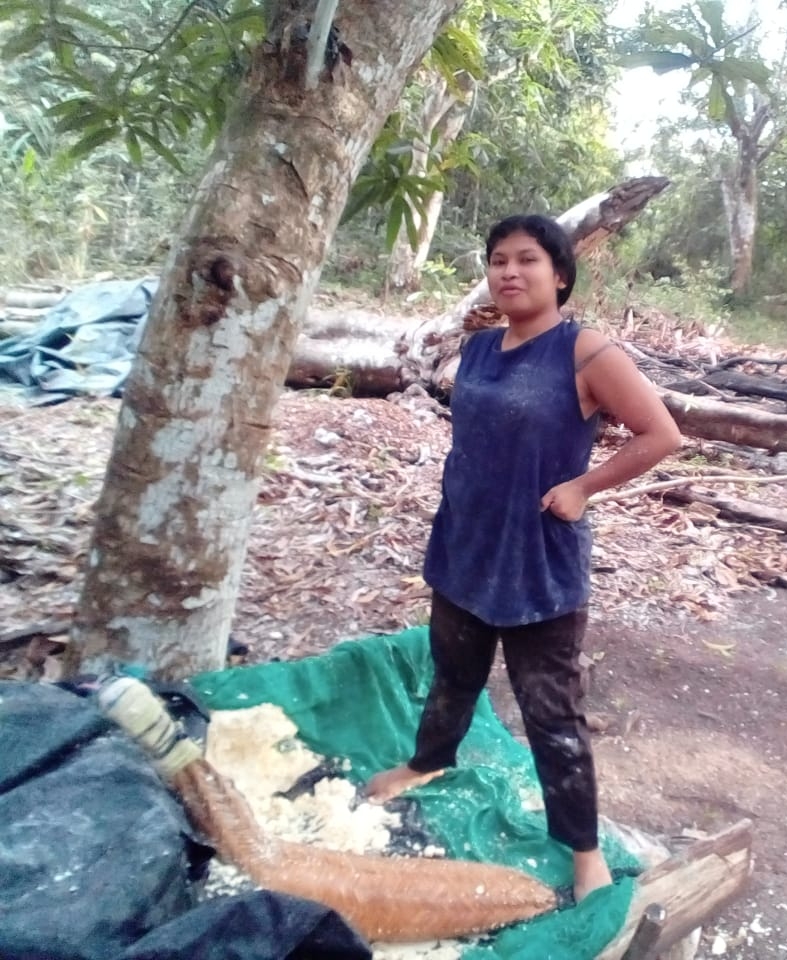Human rights defenders in Colombia continue to stand up for themselves and their communities regardless of forced displacement
Dozens of refugees and internally displaced people are human rights defenders (HRDs), but they are not always effectively recognized as such. In this article, we tell some stories about these defenders in Colombia, the challenges their communities face in terms of protection, and their strategies for defending human rights. In addition, we will discuss the history of the community of El Trompillo-Kuway, indigenous peoples currently living in the municipality of La Vichada, who were victims of forced displacement yet they continue to defend their rights.
A common question is: What is the difference between refugees and internally displaced persons? According to the United Nations, in both cases, they are people who were forced to leave their place of origin or residence because of war or persecution due to race, religion, nationality, or sexual orientation, among other reasons. The difference lies in the place to which they move: in the case of refugees, “in fleeing they cross the borders of their country,” leaving their country for another; while those who do not cross borders, but flee within their own country from one area to another, are considered to be internally forcibly displaced.
In Colombia, both situations occur. Due to the internal armed conflict and socio-political violence, the country registered more than eight million people who were victims of internal forced displacement between 1958 and 2019. It is estimated that the situation of violence forced approximately 400,000 people to leave the country between 2000 and 2012, many of them in search of asylum or refuge.
Unfortunately, situations of exile and forced displacement are not events of the past. According to the UN High Commissioner for Refugees (UNHCR), internal forced displacement “continues to affect peasant, Afro-descendant and indigenous populations… Since the signing of the Peace Agreement in November 2016, there have been more than 400,000 new internally displaced persons.”
In recent years, especially due to the worrisome humanitarian situation in neighboring Venezuela, Colombia has also been the recipient of almost 1.8 million displaced Venezuelans, which includes those who are fleeing for political reasons as well as those who migrate out of economic necessity. Colombia is a host country with the second highest number of refugees in the world after Turkey, according to the UNHCR. At the same time, Colombia remains among the top three countries with the highest number of internally displaced persons in the Americas, including within the top three countries and territories with the most new displacements in the region.
More than half of those who have been displaced in Colombia are women. In addition to the conditions of forced displacement, women and girls face higher risk for sexual violence, forced prostitution and trafficking, as well as complications derived from the lack of access to sexual and reproductive health. Furthermore, in cases of violence, there is great difficulty in accessing the justice system. If women move or seek refuge with their families, even during these circumstances, women maintain the role of “caregivers”, and continue to carry the weight of familial care.
Refugee and forcibly displaced HRDs
Faced with the repeated and prolonged violation of their rights, and due to their claims often not adequately being addressed, many internally displaced persons and refugees have organized with their communities to defend individual and collective rights. There are several examples of this in Colombia, one of which is the story of El Trompillo-Kuway.
El Trompillo-Kuway is a spontaneous settlement in La Vichada of members of various Indigenous peoples—principally the Sikuani, Kuiba, and Piapoco peoples—who organized to collectively defend their rights after being victims of forced displacement and the dispossession of their ancestral territories by armed actors in the 1980s. At present, more than 425 people (consisting of 106 families, approximately 140 girls and adolescents, and 70 women) inhabit the settlement, facing overcrowded conditions. They lack health care, potable water, basic sanitation, adequate livelihoods, and proper housing. Protection International has been working with this community to address their current needs, which means helping them have their land legally recognized. Indeed, as explained in the Risk Diagnostic that was carried out with the communities themselves, “Currently, the main struggle of the community is the legal recognition of the territory, through its constitution as a formally established Indigenous reservation. This is one of the guarantees of their collective right to land, territory, autonomy, and self-determination, which are central elements for the exercise of their rights as Indigenous peoples. It is also crucial for the preservation and strengthening of their Indigenous identity and culture.”
This community fights for the defense of their rights through various practices and the preservation of their ancestral customs, such as the fight for culturally appropriate education, so that new generations can learn in their native language, for example. Also, from the perspective of public health and governance, they aspire to organize their government, but also to be able to participate in the decisions that the Colombian government is making which affects their environment and their survival.
Protection strategies implemented by the Trompillo-Kuway communities
In addition to the risks that all displaced persons face, the Indigenous families in El Trompillo-Kuway are at heightened risk of stigmatization, defamation, and judicial harassment by actors with interests in the territory (including those involved in mining, agroindustry, building road and river infrastructure, among others). In the case of women human rights defenders within the community, they also face higher instances of stigmatization and slander, typically in a way that reproduces sexist and discriminatory gender stereotypes.
In recent months, the communities have reported that armed actors and unknown persons trespassed onto their territory without permission. Others have been spotted loitering and observing the area. The authorities continue to fail to guarantee permanence for the people El Trompillo, so there is a risk of their being forcibly displaced yet again.
In confrontation of these risks, the communities of El Trompillo-Kuway have been developing preventative protection measures to help reduce or mitigate potential harm. They have created autonomous internal structures to better organize, established meeting spaces between communities from different areas to exchange knowledge—such as the Association of Traditional Authorities and Indigenous Councils of La Primavera Vichada (ASOATCIPRIVI)—and generated support networks with diverse allies, including other organizations and peoples, non-profit organizations, and national and international NGOs. They have also created an Indigenous Guard, which is a group of watch-men and women in charge of territorial control monitoring the entry of strangers, supervising the perimeter of the area, providing physical accompaniment to the group leaders when they attend meetings, and ensuring community compliance with the internal rules of the settlement. Many women human rights defenders are also active in women’s associations to discuss and address their particular protection needs.
Conclusion
On World Refugee Day, we reflect on how those who have been expelled from their territories continue to build and defend their rights, even amidst less-than-favorable circumstances. In the case of the El Trompillo-Kuway, they continue to stand up for the rights consigned in the United Nations Declaration on the Rights of Indigenous Peoples, both for themselves and for other Indigenous communities in situations like theirs.
From Protection International, we continue to call for the guarantee of their rights. We dedicate this article to the community of El Trompillo-Kuway and to the Indigenous peoples in La Vichada, whom we will continue to accompany throughout their legitimate defense of human rights.
We invite you to learn more about these underrepresented communities and share their story on social media by using the hashtag #StayWithDefenders. Spread awareness. Spread solidarity.
Written by: Carolina Garzón, Protection International



